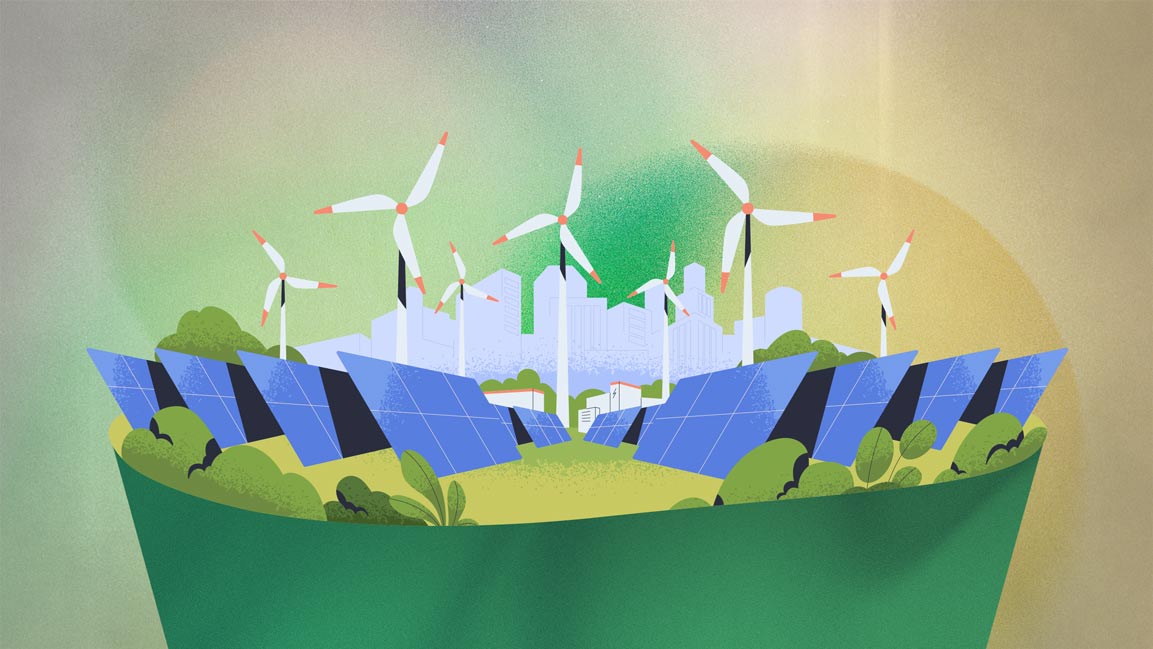- | 9:00 am
Drinking water is becoming scarce. Is desalination the Middle East’s solution?
The experts say that the Middle East’s expertise in water desalination is crucial for tackling the global water crisis

Picture this: in a desert, people are trying to conserve the tiniest drops of water while facing the catastrophic effects of climate change. If you imagined it to be Frank Herbert’s literary masterpiece Dune, our reality might not be far from this fictitious tale.
Experts and futurists worldwide have warned about the water crisis, as many countries battle persistent droughts. Desalination technology, which is dominant across the Middle East region, could be an answer to growing water insecurity worldwide. And, according to experts, with the impact of climate change, the Middle East’s expertise and technical know-how could become its lucrative export business.
Saudi Arabia has a crucial role to play in the future of desalination, said Henrik von Scheel, best known as the originator and vanguard of the Fourth Industrial Revolution and the mastermind of the European Digital Agenda. “It won’t be long before the Saline Water Conversion Corporation is going to be the Google or Amazon of the water sector.”
A VIABLE SOLUTION
The process of water desalination has been operational in Saudi Arabia as early as the 1900s when Jeddah became the first city to install two privately-owned distillation condensers to accommodate the city’s increasing demand.
The Saline Water Conversion Corporation (SWCC) was established as an independent government organization in 1974 to promote and control water distillation enterprises in the kingdom as this technique began to gain favor in the region. Today, the technique has become a working solution to tackle the water scarcity crisis staring into our faces. Desalination provides the United Arab Emirates with 42% of its water needs.
“Desalination is an important instrument to diversify water resources mix, increase the predictability of water availability and therefore improve the climate resilience of water services,” said Zael Sanz Uriarte, Senior Water and Sanitation Specialist at World Bank Group.
However, it isn’t all that easy. Desalination is an expensive technology, and ambitious desalination programs may have an important fiscal impact.
“Desalination programs should also be procured to incentivize innovation to maximize energy efficiency and should go along with efforts to green the energy mix. Otherwise, we could be exacerbating the effects of climate change when trying to adapt the water sector to its effects.”Uriarte added.
Desalination results in increasing levels of greenhouse emissions, which show no signs of slowing down because the improvement of inefficiency does not match the rapid growth in water demand. “This is largely driven by the strong demographic growth in the Middle East,” said Laurent Lambert, Water-Energy-Climate Public Policy Asst. Professor at Doha Institute for Graduate Studies.
TAKING THE GREEN ROAD
Being a potential solution to the world’s water scarcity problem, desalination on an industrial scale can be notoriously expensive, leading to rising pollution levels. The good news is that desalination plants can be powered using solar energy.
The Middle East’s water desalination industry has a potential but a challenging future. To lower the conversion cost, improve conversion efficiency, and simultaneously reduce carbon emissions, the SWCC has been aiming to include more renewable sources in its water desalination operations.
Similarly, the Dubai Electricity and Water Authority intends to use solar energy more widely to power its desalination plants, but technical barriers stand in the way.
“The first fundamental issue with the plants is that most of the desalination infrastructure isn’t ready for solar energy. Secondly, solar panels must be cleaned often, so you need water. Cleaning these panels would add to existing water stress,” Lambert added.
That said, it’s not as bad as we used to think a dozen years ago, but he said there’s still a constraint on the full exploitation of the solar industry.
For renewable desalination to pan out, the focus must be on greening the broader energy mix and reducing the emission factor of the grid. “We should ensure that the structure and regulation of the energy sector create incentives and allow for desalination to run on renewables so that developers can enter into direct agreements with companies to purchase certified green energy. This would allow developers to produce a fraction of their energy requirements on site and sell excess production to the grid during peak hours,” said Uriarte.
Solar desalination is probably growing but not as fast as it would appear. Lambert added, “let’s keep in mind this is a massive industry. So it will require quite a number of years before solar desalination can replace the current industry, which is largely thermal, driven by natural gas or crude oil.”
TECHNOLOGY TO THE RESCUE
Energy isn’t the only factor standing in the way of the desalination technique. After desalinating, the leftover brine is rejected back into the seas and oceans. This can increase the salt levels in the area, harming marine life, particularly those found close to the seabed.
“Even though there have been a number of improvements to spreading the brine over larger areas to avoid harming the environment, you still will have to reject brine. Remember, at the end of the day, the more you desalinate water, the more brine you will have to reject,” Lambert said.
All hope isn’t lost yet; this waste brine could be economically and ecologically beneficial, according to an MIT article. Using a simple process, this waste material can be converted into useful chemicals, making desalination more efficient. “It has the potential to address the other major sustainability concern, allowing for desalination to embrace the principles of the circular economy,” Uriarte said.
Though desalination may have begun as a costly and inefficient method, it shows promise for evolving into a sustainable technique in the coming years.
With the help of technology, the desalination process can be fine-tuned to boost its efficiency. A unique way to achieve this is by deploying smart cities with smart grids.
“We need to deploy smart grids and smart cities so that the country’s production capacity can be used better. This means within ten years, we can expect that most public buildings will have solar roofs. Excess power generation can be then added to the national grid when, for instance, schools and offices are shut during holidays. This power can be fed into desalination plants,” Lambert said.
But he added that until we are ready for such innovative infrastructures, we would have to continue to rely on natural gas in most countries.
Shedding light on the need for technological advancement in the desalination process, Uriarte said, “All these technological advances need an adequate enabling environment, and policymakers have to follow up closely on these developments to ensure that regulatory frameworks are adapted to become an enabler and not a barrier to the uptake of new technologies.”
ON A LARGER NOTE
Equipped with the expertise and technical know-how, the countries in the GCC region, especially Saudi Arabia, can lead the way in addressing the water scarcity crisis.
“Due to a lack of choices, the Middle East has been extensively investing in desalination for a long time. They currently possess the necessary expertise which the world is in dire need of,” said von Scheel.
For countries thinking of going big on desalination, the World Bank has been actively helping emerging economies set up the required institutions, rules, and policy frameworks to manage their water resources more effectively. The World Bank Group is keen on providing developing countries with concessional loans to co-finance capital investments with private developers, providing viability-gap funding to reduce the financial costs and make desalination projects more affordable.
“With our global reach, we could act as knowledge brokers, partnering with countries that are ahead of the curve in the desalination subsector, like those in the GCC, to help adopt the right transaction structures for the development of the desalination process,” Uriarte said.







































